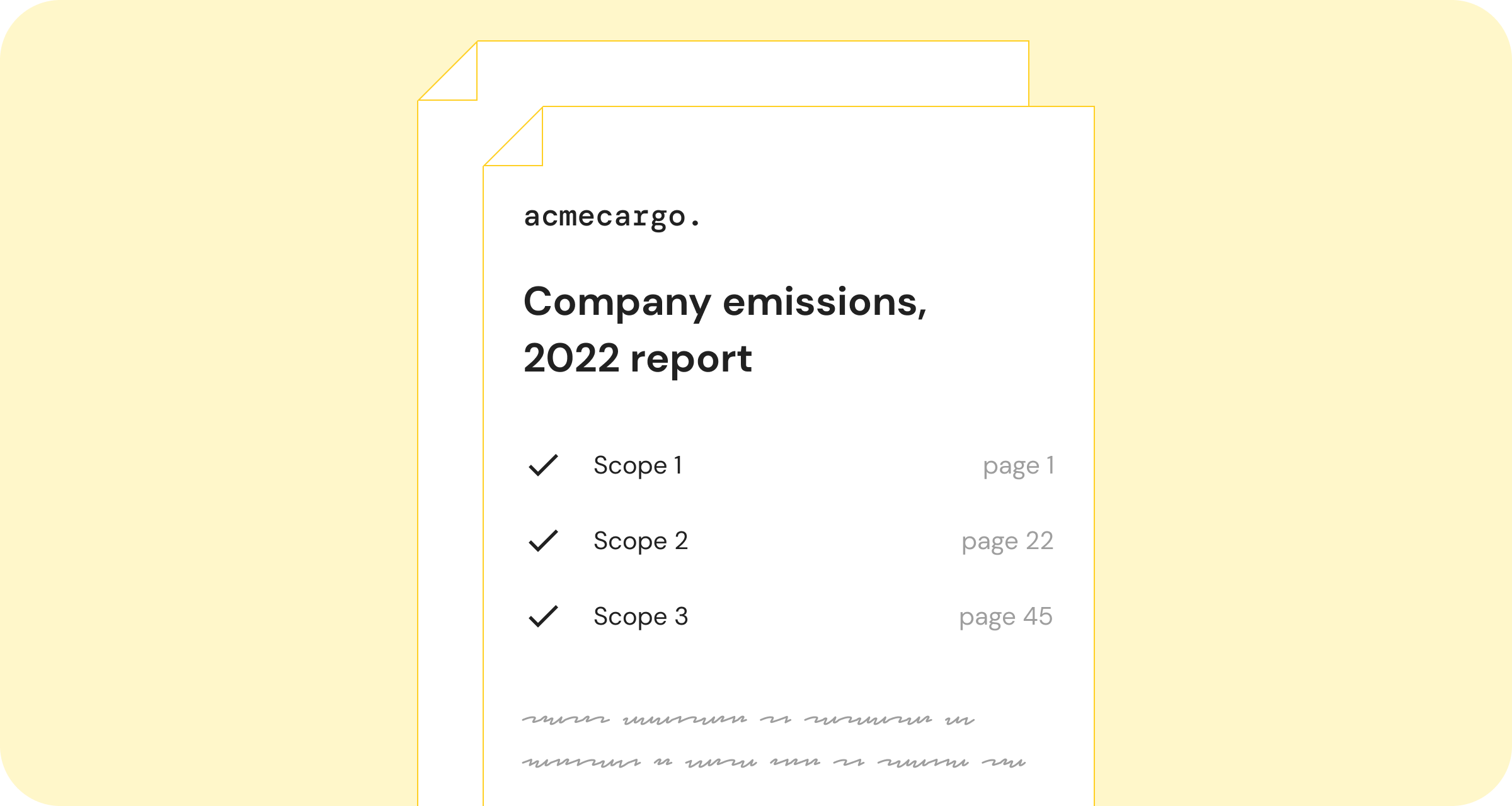
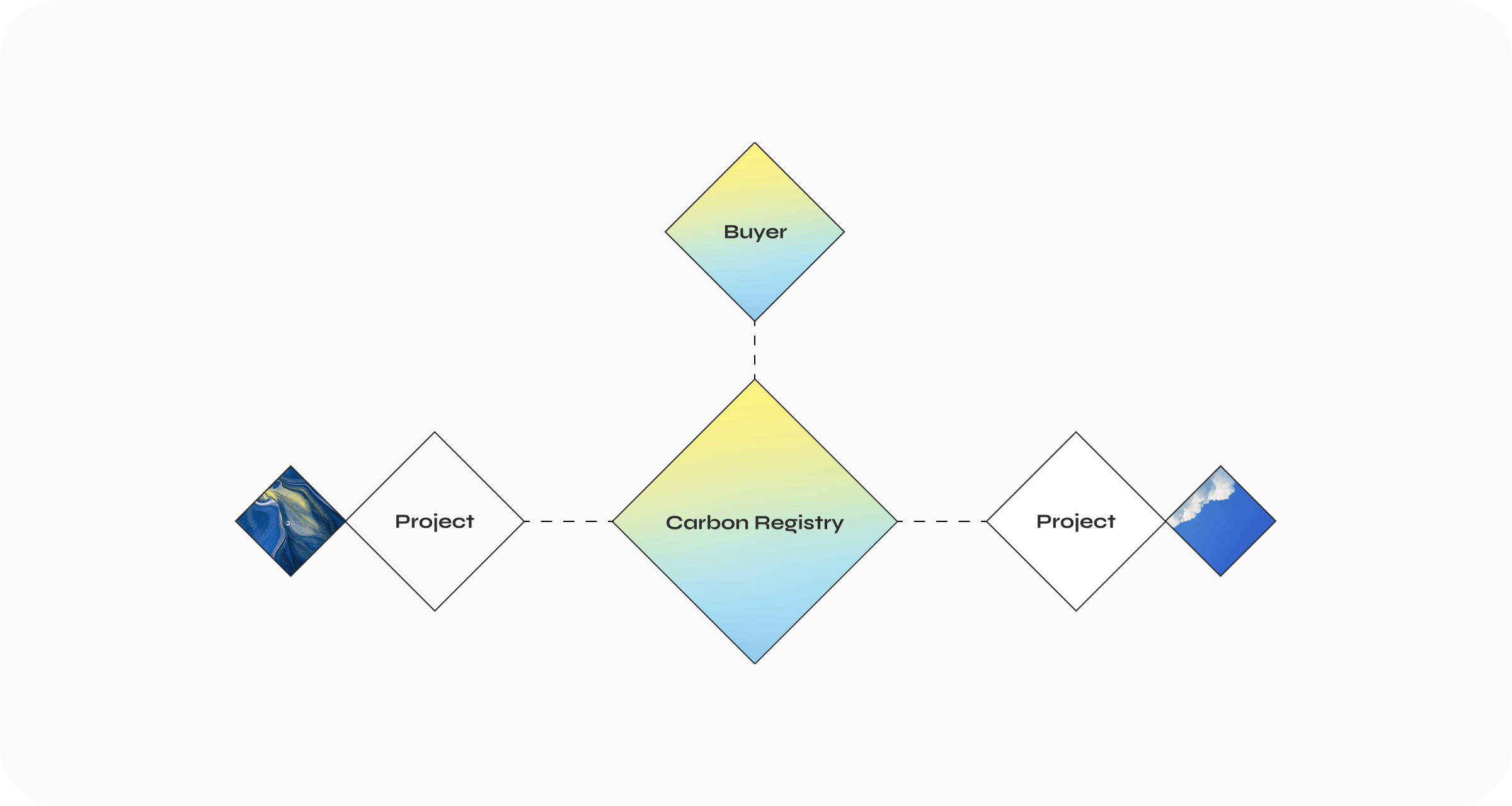
Carbon registries are a vital part of ensuring the integrity and credibility of the voluntary carbon market (VCM).
A carbon registry is a system used to generate and track carbon credits throughout their lifecycle. So, within the registry carbon credits are:
- Generated and issued. The amount of carbon credits issued is equal to the amount of carbon emissions a carbon project has avoided/removed (ex-post) or will (ex-ante) avoid/remove in the future. A unique identifier, like a serial number, is given to every carbon credit issued.
- Stored. Once issued, carbon credits are stored within the carbon registry to ensure they are visible and tracked.
- Bought and sold. All purchases of carbon credits are tracked through the registry, ensuring that carbon credits are traceable to the individual or business which bought them.
- Retired. Carbon credits are also retired in the registry once the carbon benefit which they represent has taken place. For ex-post carbon credits this will occur at the point of purchase. For ex-ante carbon credits, the registry should indicate the purchase date and the expected date of delivery and retirement.
It’s vital that all of these stages are properly tracked to avoid any instances of double counting – when carbon credits are issued multiple times, or claimed by multiple entities.
For carbon projects that are certified via a carbon standard like Verra or Gold Standard, all of this will happen in the registry hosted by the carbon standard.
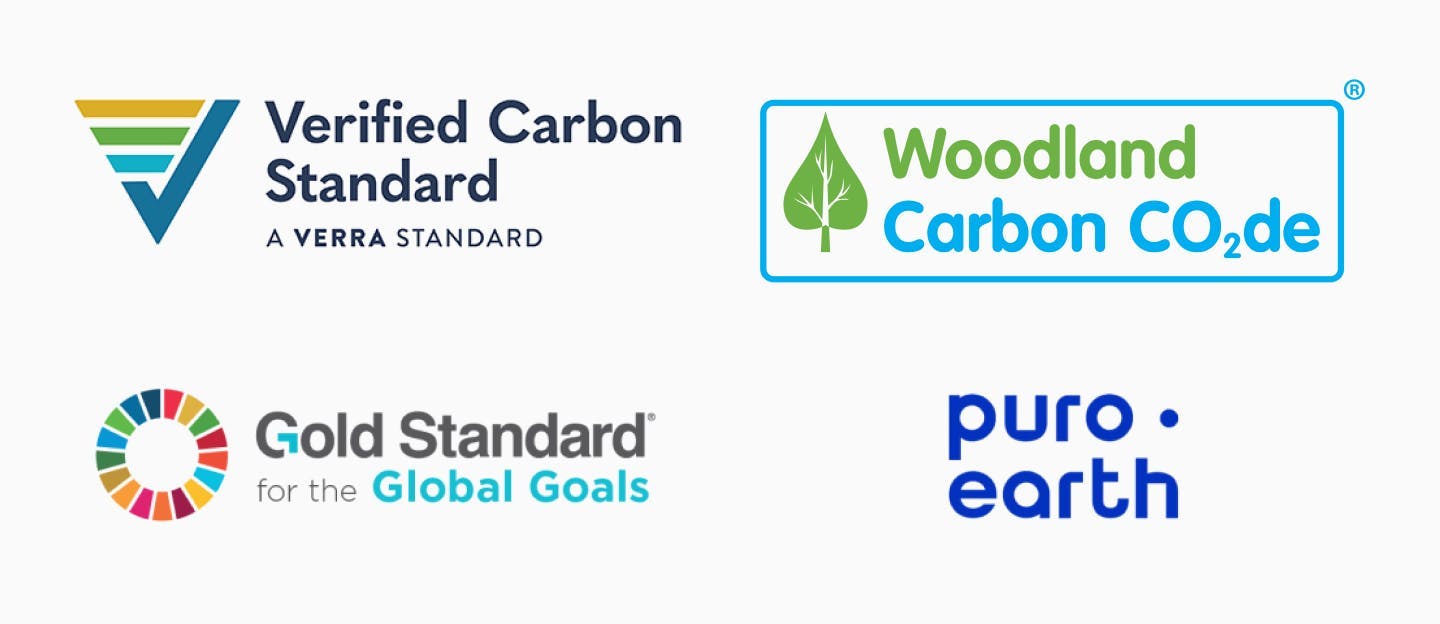
So, for instance, let’s look at the Verra registry.
It’s publicly available and lists all carbon credits issued for carbon projects certified by Verra, including whether they have been sold (and who to) and whether the credits have been retired.
The Delta Blue Carbon project – a mangrove restoration project in Pakistan which is included in the Lune library – is an example of a project certified through Verra.
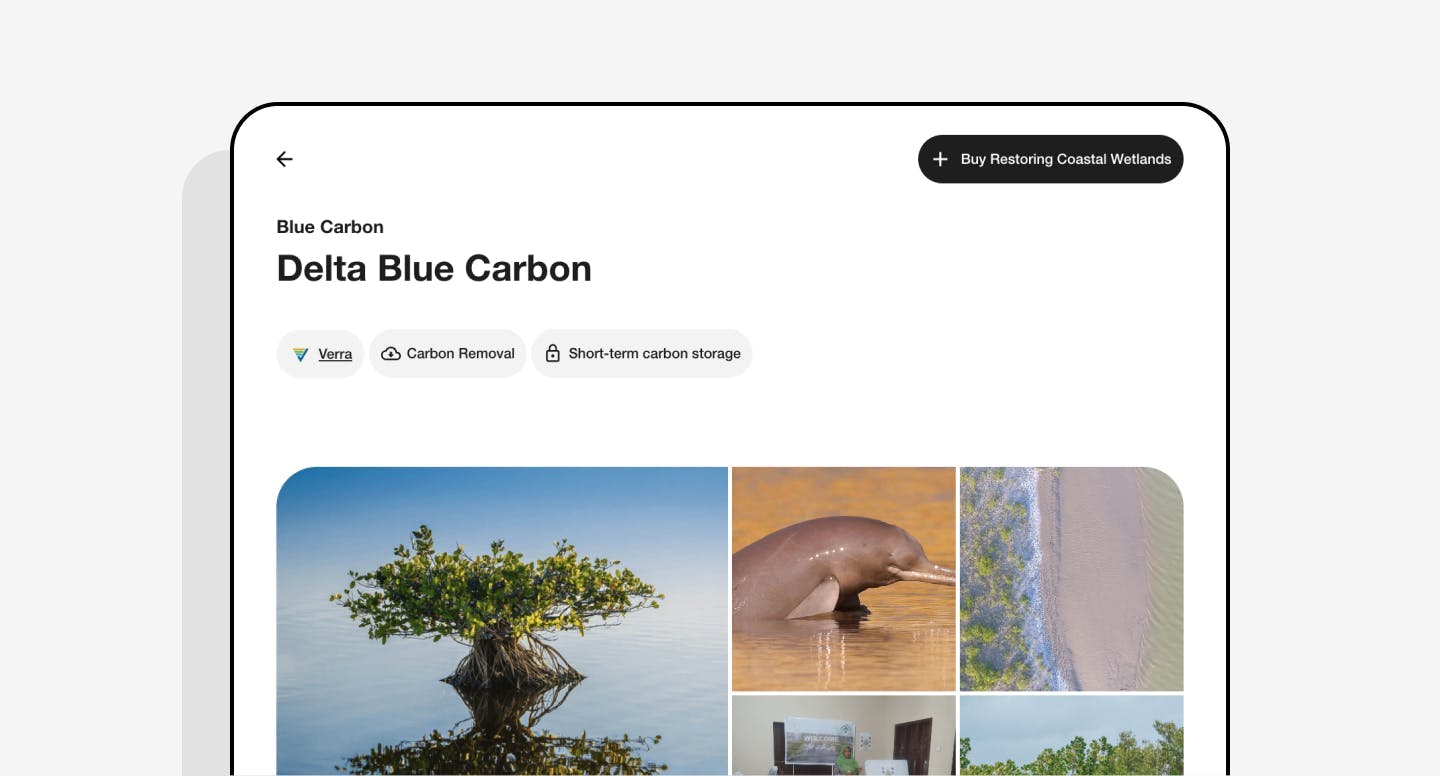
So, all the carbon credits issued for the project are listed within the Verra registry:
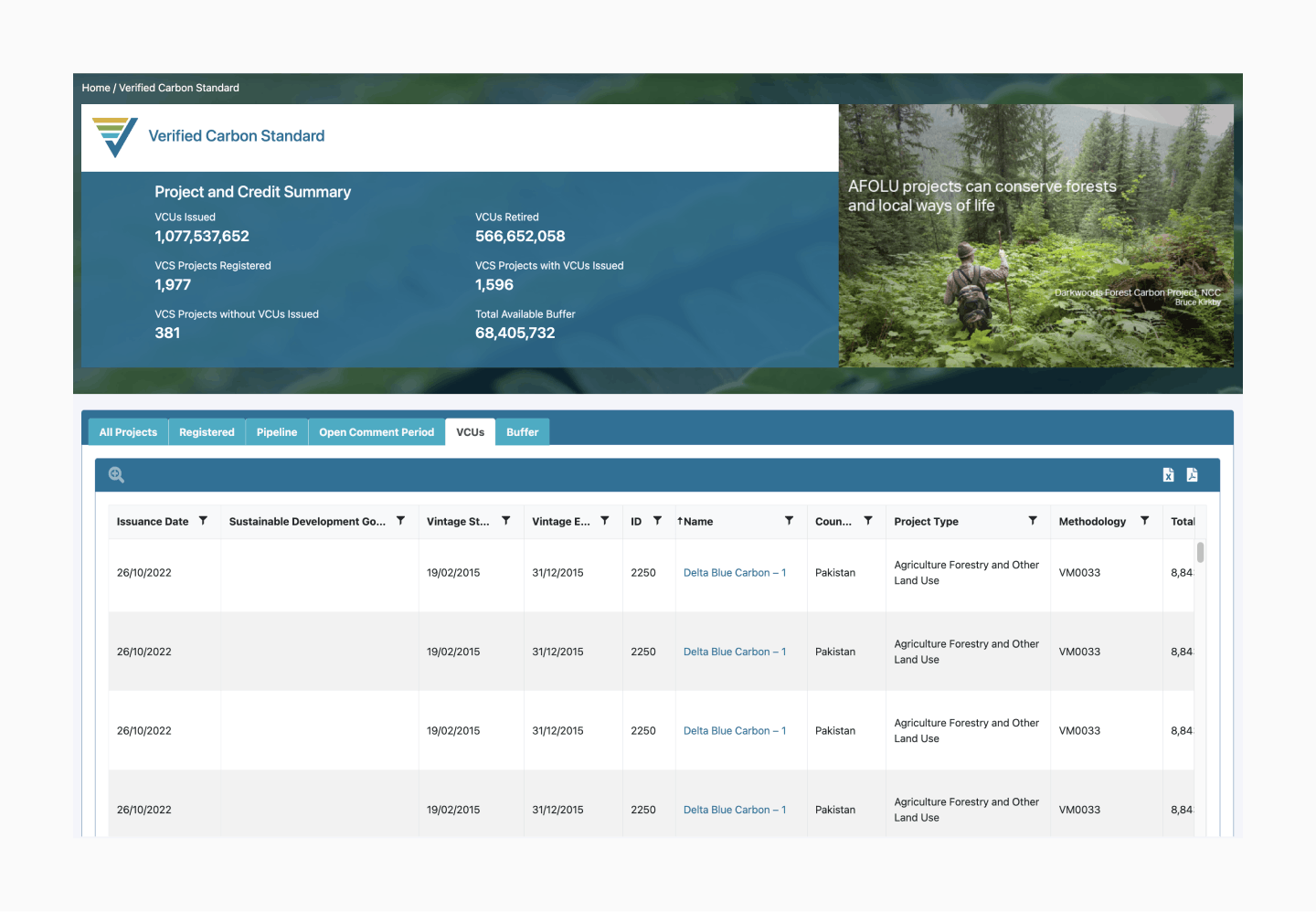
Not all carbon standards host their own registry; some use standalone, independent registries. All carbon credits for projects certified by Gold Standard, for instance, are retired on the IHS Markit registry, an independent establishment.
So, all carbon projects that have access to an approved methodology for their project type should be certified via the carbon standard that issued the methodology, and therefore should be listed in their registry (or the registry they use) – as Delta Blue Carbon is.
But, not all projects have access to an approved methodology – for early stage techniques (like Direct Air Capture, bio-oil sequestration, or ocean carbon removal) the methodology will still be in development.
So these projects won’t be listed in a carbon standard registry.
Projects that aren’t certified need to demonstrate that they have robust, transparent processes in place themselves for tracking carbon credit issuances, sales, and retirements.
So, for instance Charm Industrial – a bio-oil sequestration project listed in Lune’s library – is an example of an early-stage, innovative carbon removal project that is not yet certified.

Charm Industrial has a carbon registry of their own. It includes every purchase made of their carbon credits, and includes detailed life-cycle analysis for that purchase – showing at what stage in the cycle of issuance, buying, and retirement that specific purchase is. The registry is publicly available to all, via Charm Industrial’s website.
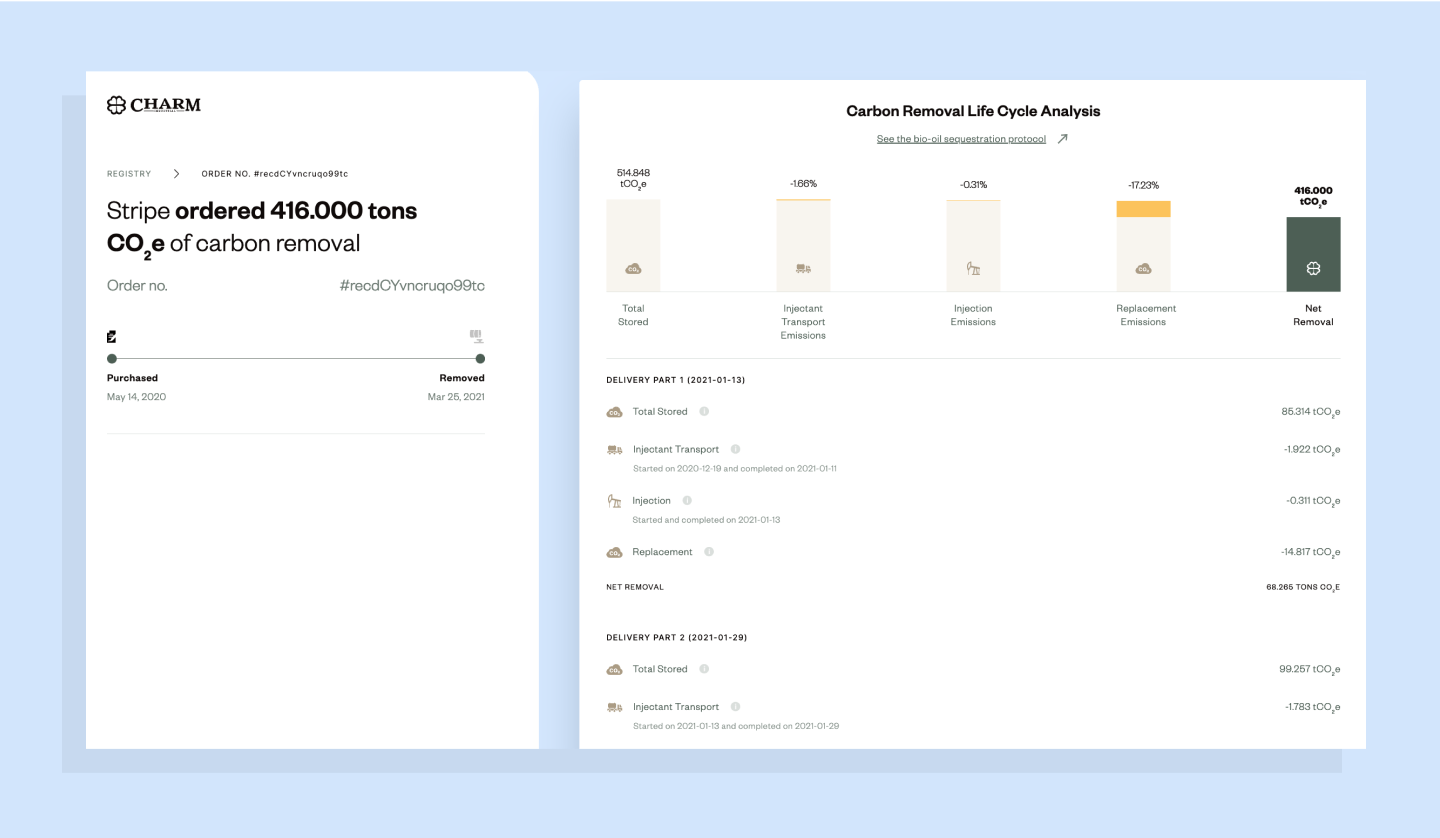
To learn more about Delta Blue Carbon and Charm Industrial, and explore the other carbon projects in our library, log-in or sign-up to the Lune dashboard to get started.
Readers also liked
Readers also liked

Subscribe for emissions intelligence insights
Get the latest updates in the world of carbon tracking, accounting, reporting, and offsetting direct to your inbox.


